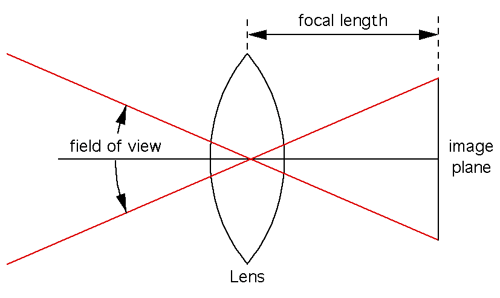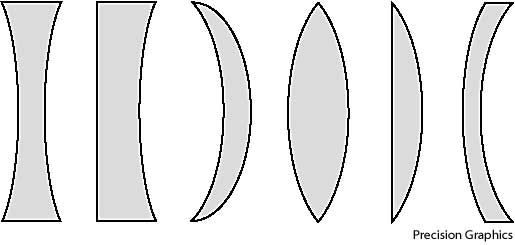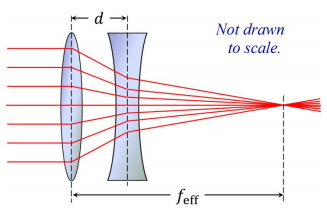....I would have thought that any member of this forum who has posted over 1,500 replies and who has an image of a photographer (yourself?) as their avatar would know what an aperture is by now!
An aperture is defined as either an opening or a hole or are you being pedantic about
@Nostromo 's sue of the word "hole"?
Perplexed me too...
But then if I was being 'picky' with
The f-stop numbers are a bit confusing, in that big number=small hole, small number=big hole. This is because the numbers are actually fractions. So f4=1/4, f8=1/8 and so on.
it would have been that the F-No isn't a 'fraction', which is an actual 'value' expressed as an half-done sum, but a 'ratio' which isn't a sum, but an equation defining the relationship between two commodities... in this case the diameter of a hole* in relation to the focal length of the lens.... you can use it to DO a sum, and 'get' a value, but on its own it's not a 'value', its a relationship.
y=mx+c is the equation for a straight line, it defines the relationship between two 'variables', X and Y. You have to 'substitute' actual values into it to 'do a sum'... 1/2 is a fraction, its a number, 0.5, an actual value. If we were to say that 'm' the gradient of our straight line is 1/2 or 0.5, it is then a 'constant of proportionality'.. but it is still a 'value'... now y=0.5x+c and if we say c is zero, we have y=0.5x or in words, y (aperture diameter) is 'half' x (lens focal length)... often short-handed to just say something is 'half' something-else, and used AS a 'ratio', but strictly its not, its still a 'value'..used as a constant of proportionality IN a ratio... but that is getting very pedantic!
* Purely for academic interest; Could get even more pedantic about 'aperture diameter', as usually lens apertures aren't nice round holes, they are hexagons or pentagons, or octagons or other multi-sided geometric shapes, and with curved 'leaf' aperture blades often not even nice regular ones, rather than a circle. So the 'diameter' is often imaginary, and that of a 'theoretical' circle of the same area..
Then delving even further into the science, the 'maths' gets even more imaginary, because very few lenses, actually have a 'true' focal length, or 'true' aperture size.
'True' focal length is the actual distance fro the 'centreline' of the lens, to the focal plane it projects an image on.. for a 'simple' single element lens, like that one, which has an equal amount of 'bow' on the front and the back.. they aren't always, and these days seldom so 'convenient'.
Where would the 'centre' of that "Meniscus" form lens on the end, be, for example?
And which distance do you measure if you have two lenses, one behind the other? Which is what you have in most modern camera lenses, which is why in the specs they talk of how many elements a lens has and how many 'groups' they are arranged in.....
Looking at the Nikon Web-site, the Kit 18-55mm 'zoom' lens that comes with my camera has 7-elements, arranged in 5-groups.... cracking out the vernier gauge and trying to measure 'something', at it's 55mm 'focal length' the front element is about 92mm from the lens-mount... at the 18mm focal length, the front element is about 88mm from the lens-mount , and it's at its 'shortest' at around the 30mm focal length, when the front element is about 80mm fro the mount.... I am NOT poking the depth gauge of my vernier into the camera to find how far the 'sensor' is from the lens-mount! at a rough guess, it's probably 45mm or so..
This all suggests the 'sums' are all a bit of a nonsense... because focal length doesn't actually relate to any 'real' actual measurable distance! And neither does the aperture 'size'.
Interesting to note, that this lens, like many, changes 'physical' length with the zooms 'focal length'.. BUT, at the short, 18mm setting, it's a lot longer than 18mm, and at the 'long' 55mm setting, its still significantly longer than 55mm, and it actually gets 'shorter' in between the two..
Obviously, the 'Len-Length' as a zoom setting, isn't the 'actual' lens length in the physical world, 'something' is happening inside the lens, with these seven 'elements', individual glass lenses, and their 'groupings' that is 'equivalent' to an 'imaginary' single element, of that 'imaginary' distance fro the focal plane or 'sensor'.
So the 'sums' are all thrown to kilter by this working to idealised 'equivalences'... for both the focal length AND the f-number derived from it.
Two more useful points of note from this little deliberation;
First off; 'Variable Aperture' Zooms. That 'Kit' 18-55 is described as an f3.5-5.6 lens. The 'widest' aperture is f3.5 at the 18mm zoom setting, while at the 55mm zoom settling, the fastest aperture is f5.6. Racking through the 'zoom' range.... it becomes f4 at the 24mm setting, f5 at the 35mm setting, and the slightly 'odd' f5.3 at the 45mm setting. Offers some even 'odder' f-numbers at other settings in between.
This is 'sort' of explained by the fact that the F-Number is a 'ratio' of (equivalent) focal length, to (equivalent) aperture diameter. So, f3.5, at 18mm the 'equivalent' aperture size is a hole 18/3.5 or 5.14mm in diameter..... if you then 'zoom in' and increase the focal length from 18mm to 55mm, a 5.14mm divided by 55mm gives an f-no of 10.5... which gives us yet another 'anomaly' because specs say that the lens has an f-no of f5.6 at 55mm... but that would mean an 'aperture' of 55mm/5.6 or 9,8mm diameter, which at 18mm would give us an F-No of f1.8, which would be fantastic! That's as 'fast' as an expensive 'prime' lens!
So, again, the maths doesn't stack up. Either the hole changes size as you zoom, or it's neither 5.14mm or 9.8mm... or quite possibly a little bit of both! Explanation, is again in all these 'equivalences' and it depends in where i the lens the aperture is placed i relation to these moving 'elements' as to what 'equivalence' size it has n relation to its actual 'physical' size.
Important thing IS... its NOT actually 'important'! We don't really need to know how 'big' our aperture is, or indeed what our 'focal length' may be. The important thing to us, is the f-number, and its merely worth observing that many 'zoom' lenses change f-number when you zoom... the f-number tending to get higher, begging a slower shutter-speed to maintain the same 'exposure'.
Next I mentioned how far the 'sensor' or focal plane in my camera was from the lens-mount, about 45mm-ish. This 'gap' is there to to accommodate the 'mirror' for the view-finder that lets me look through the same lens as takes the photo. And it needs that 'space' so that it can hinge 'up' out of the way, to let light fro the lens get to the sensor when I press the shutter.. so you cant really stick a bit of class in it's way... that means, you cant 'physically' put a lens of 'true' focal length less than 45mm-ish on the camera... well you could... but it wouldn't be focusing on the sensor, cos it would HAVE to be more than 45mm away!
Consequently, almost all SLR camera lenses are what is know as 'Retro-Focus', and this accounts for some of those 'extra' lens elements in their construction. They are used to 're-focus' the image the lens captures, and chuck it 'back' the depth of the mirror housing.
Not particularly 'relevant' to very much, but, on the principle that every extra bit of glass you pass light through is a chance for more image degradation, light-loss and distortion, the 'less' elements a lens had, the better, so having perhaps two or three extra elements just to 'compensate' for having a mirror in the way of the lens, was good cause for many serious photographers of old to spurn 'SLR' cameras with a mirror in the way, in favour of separate view-finder, 'Range-Finder' or Twin-Lens-Reflex cameras, without them.. as well as 'zoom' lenses that usually have extra elements to move around and get the different 'equivalent' focal lengths in the range the zoom offers, i favour of 'fixed' focal length 'prime' lenses.
Curiously, this little bit of 'lore' is something that could be sung of in favour of 'mirror-less' system cameras, and I wish to mention only to tell them to STOP buying up all the lovely old 35mm SLR film camera lenses I'd like, for them! You are buying 'extra' distortion to 'correct' for a problem you dot have, and probably introducing even more, adding an adaptor mount with yet another element in it! Stick to your own system's lenses! Leave the old filmie ones to us old filmies! Expensive enough we have to pay for film, without compete with you lot for shorter focal length lenses for them! And if you really want to get 'shallow DoF' effects, you don't 'need' 'fast' f2, f1.8 or f1.4 prime lenses, you need a bigga-sensa! (Like, maybe 4.5cm or so ;-))




 thank you guys.
thank you guys.



Thanks, yes as a beginner I'm still learning the basics I appreciate people's comments and advice and yeah it is confusing

